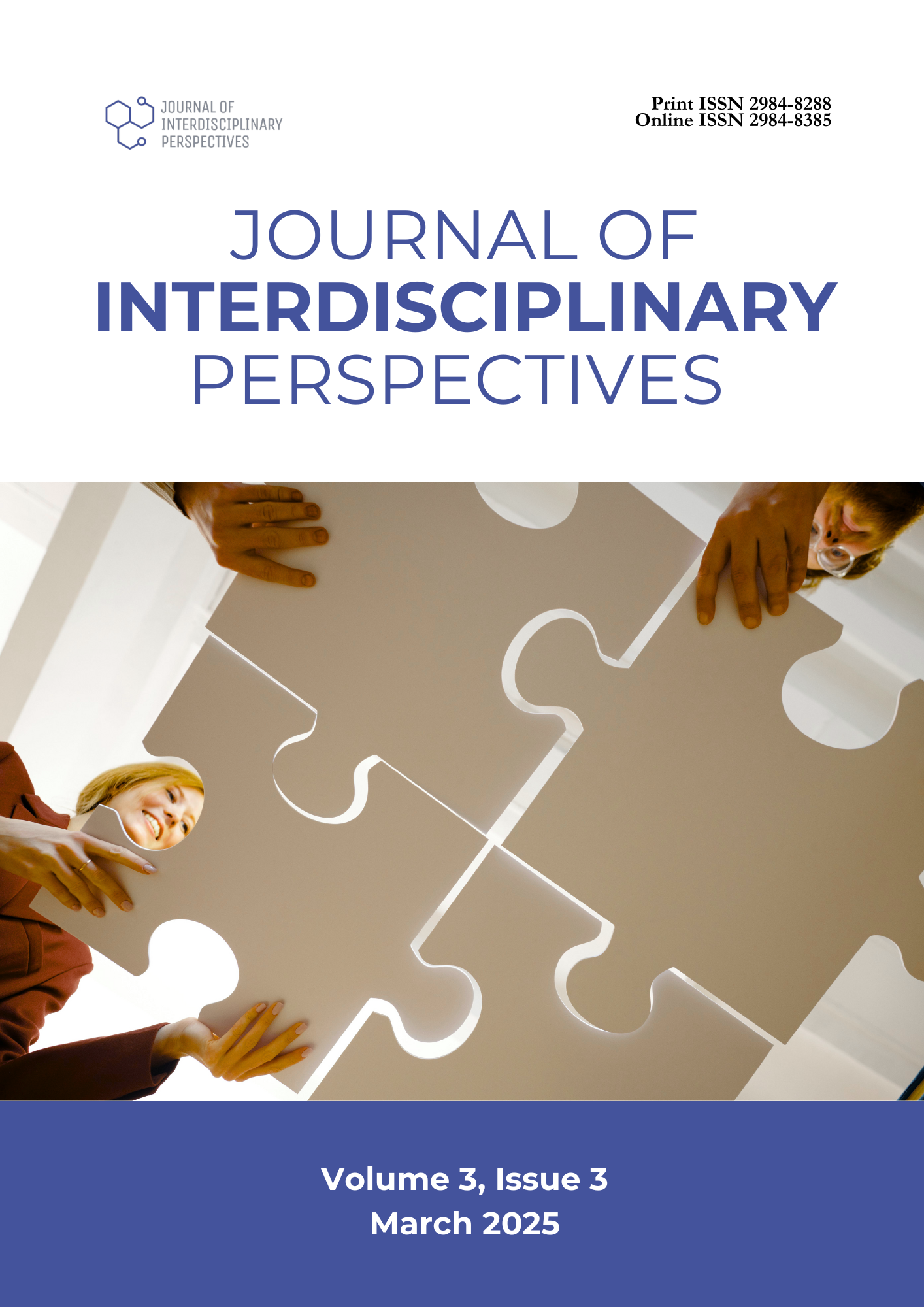A Systemic Functional Grammar Analysis of Pecola Breedlove’s Language as a Tragic Female Protagonist in Toni Morrison’s The Bluest Eye
DOI:
https://doi.org/10.69569/jip.2025.003Keywords:
Language, Pecola Breedlove, Systemic Functional Grammar, Toni Morrison, Tragic ProtagonistAbstract
This study employed Systemic Functional Grammar (SFG) to analyze Pecola Breedlove's language as a tragic female protagonist in Toni Morrison's The Bluest Eye. While Morrison's work has been extensively analyzed through feminist and postcolonial lenses, limited research has explored how Pecola's language functions as a site of her oppression and marginalization. Specifically, the study aimed to examine Pecola's spoken dialogue by analyzing the process types within the ideational metafunction, mood structure, and pronoun usage within the interpersonal metafunction. Additionally, the study explored how her language reflects her identity as a tragic female protagonist. The results indicated a prevalence of mental and material processes, interrogative and imperative mood structures, and exclusive pronouns in Pecola's language. These linguistic choices depicted her as an emotionally and psychologically burdened character who lacks agency, emphasizing her vulnerability, desperation, and alienation. Together, these features contributed to the development of her tragic characterization. Through the exposure of how language encodes powerlessness, this study offered a fresh linguistic perspective on Pecola's tragic characterization and deepened feminist readings of The Bluest Eye. Future research can build on these findings by applying SFG to other marginalized characters in Morrison's works or across different literary genres, deepening the understanding of how grammatical structures shape meaning and representation in literature.
Downloads
References
Al Mamun, A., & Siddika, S. (2020). The Bluest Eye: An analysis of the narrative techniques. Journal of Jessore University of Science and Technology, 5(1&2), 40-46. https://tinyurl.com/y3kppetw
Banks, D. (2019). A systemic functional grammar of English. Routledge.
Bibi, N., Ayub, A., & Basit, A. (2023). Transitivity analysis of Kate Chopin's short story The Storm through Halliday's systemic functional grammar. Al-Mahdi Research Journal (MRJ), 5(2). https://tinyurl.com/54su4zs2
Bloor, T., & Bloor, M. (2004). The functional analysis of English: A Hallidayan approach. Hodder Arnold.
Dreifus, C. (1994, September 11). Chloe Wofford talks about Toni Morrison. The New York Times Magazine. Retrieved from https://www.nytimes.com/1994/09/11/magazine/chloe- wofford-talks-about-toni-morrison.html
Duvall, J. (2000). The identifying fictions of Toni Morrison. Palgrave Macmillan.
Eggins, S. (2004). An introduction to systemic functional linguistics (2nd ed.). Continuum.
Ezz-Eddin, N. S. (2024). A systemic-functional grammatical analysis of Woolf’s story. Egyptian Journal of Linguistics and Translation, 12(1), 154-173. https://doi.org/10.21608/ejlt.2023.245385.1045
Fairclough, N. (2013). Critical discourse analysis: The critical study of language. Routledge.
Gallardo, B. C. (2006). Analysis of a literary work using systemic-functional grammar. In 33rd International Systemic Functional Congress (pp. 735-762). https://tinyurl.com/2f2jcjkj Gee, J. P. (2014). How to do discourse analysis: A toolkit. Routledge.
Halliday, M. A. K., & Matthiessen, C. M. I. M. (2014). An introduction to functional grammar (4th ed.). Routledge.
Iwamoto, N. (2007). Stylistic and linguistic analysis of a literary text using systemic functional grammar. Departmental Bulletin Paper, 162, 61-96. Kubitschek, M. D. (1998). Toni Morrison: A critical companion. Greenwood Press.
Kumar, T. A. (2023). Interwoven voices and visions: Analyzing narrative techniques in Toni Morrison's The Bluest Eye. International Journal of Development in Social Sciences and Humanities, 16(1), 69–75. https://ijdssh.com/admin1/upload/07%20Dr%20T.%20Arun%20Kumar%2001253.pdf
Martin, J. R., & Rose, D. (2007). Working with discourse: Meaning beyond the clause (2nd ed.). Continuum.
McCrocklin, S., & Slater, T. (2017). A model for teaching literary analysis using systemic functional grammar. Texas Journal of Literacy Education, 5(1), 81-96. https://eric.ed.gov/?id=EJ1147650
Morrison, T. (1970). The Bluest Eye. Pocket Books.
Pasaribu, A. N., Sinambela, E., & Manik, S. (2020). The contributions of systemic functional linguistics to literary text analysis. International Journal of Linguistics, Literature and Translation, 3(9), 81-86. https://tinyurl.com/3dju4dj9
Phiri, A. M. M. (2009). Toni Morrison and the literary canon: Whiteness, blackness, and the construction of racial identity (Doctoral dissertation). Rhodes University, South Africa. https://tinyurl.com/mr63m9uj
Rehan, N. (2018). Analyzing literary texts through functional grammar. Linguistics and Literature Review.
Srivastava, P. (2023). A study of longing for belonging in Toni Morrison’s The Bluest Eye. International Journal of Novel Res earch and Development, 8(5), i858–i863. https://ijnrd.org/viewpaperforall.php?paper=IJNRD2305900
Thompson, G. (2014). Introducing functional grammar (3rd ed.). Routledge. Toolan, M. (1998). Language in literature: An introduction to stylistics. Routledge.
Downloads
Published
How to Cite
Issue
Section
License
Copyright (c) 2025 Journal of Interdisciplinary Perspectives

This work is licensed under a Creative Commons Attribution-NonCommercial 4.0 International License.









